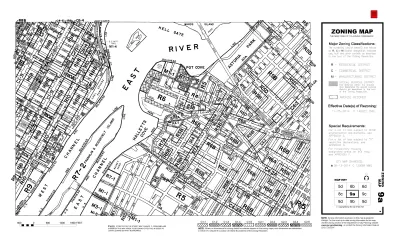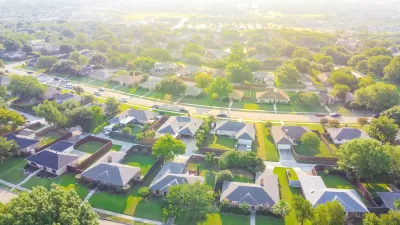Federal oversight of zoning reforms could coordinate efforts across agencies and shoulder some of the political backlash to local zoning changes.

“Balancing America’s lopsided housing markets — where wealthy neighborhoods block new housing while poorer places shoulder churn and displacement — means rethinking the codes that allowed these patterns to take hold. To accomplish this, the White House is looking to see if it has more leverage with city and county governments than it found with congressional lawmakers,” writes Kriston Capps in Bloomberg CityLab.
But with the current structure of the government, local leaders looking to reform zoning in their towns don’t have a centralized federal office to go to for resources. The solution? “The White House just might need a zoning czar.”
According to Capps, “Solving exclusionary zoning will require nimble, silo-busting thinking from across agencies devoted to housing, transportation, financing, veterans, rural and tribal communities and even the environment.” Capps acknowledges that “Since the federal government has no authority over local zoning codes, its tools are limited to carrots or sticks to encourage cities and counties to adopt reforms.” As such, “A federal zoning office could be a body like the U.S. Interagency Council on Homelessness, which was established (by statute) in 1987 to coordinate efforts to address homelessness across some 19 different federal agencies.”
Capps continues, “While exclusionary zoning must be understood as a racial justice concern, it is also a matter of regulatory burdens that limit business, growth and freedom of opportunity. A zoning czar could frame it both ways.” And “Perhaps more importantly, such an office could start to attack the political problems associated with zoning reform.”
FULL STORY: Does the White House Need a ‘Zoning Czar’?

Alabama: Trump Terminates Settlements for Black Communities Harmed By Raw Sewage
Trump deemed the landmark civil rights agreement “illegal DEI and environmental justice policy.”

Planetizen Federal Action Tracker
A weekly monitor of how Trump’s orders and actions are impacting planners and planning in America.

The 120 Year Old Tiny Home Villages That Sheltered San Francisco’s Earthquake Refugees
More than a century ago, San Francisco mobilized to house thousands of residents displaced by the 1906 earthquake. Could their strategy offer a model for the present?

In Both Crashes and Crime, Public Transportation is Far Safer than Driving
Contrary to popular assumptions, public transportation has far lower crash and crime rates than automobile travel. For safer communities, improve and encourage transit travel.

Report: Zoning Reforms Should Complement Nashville’s Ambitious Transit Plan
Without reform, restrictive zoning codes will limit the impact of the city’s planned transit expansion and could exclude some of the residents who depend on transit the most.

Judge Orders Release of Frozen IRA, IIJA Funding
The decision is a victory for environmental groups who charged that freezing funds for critical infrastructure and disaster response programs caused “real and irreparable harm” to communities.
Urban Design for Planners 1: Software Tools
This six-course series explores essential urban design concepts using open source software and equips planners with the tools they need to participate fully in the urban design process.
Planning for Universal Design
Learn the tools for implementing Universal Design in planning regulations.
Clanton & Associates, Inc.
Jessamine County Fiscal Court
Institute for Housing and Urban Development Studies (IHS)
City of Grandview
Harvard GSD Executive Education
Toledo-Lucas County Plan Commissions
Salt Lake City
NYU Wagner Graduate School of Public Service





























